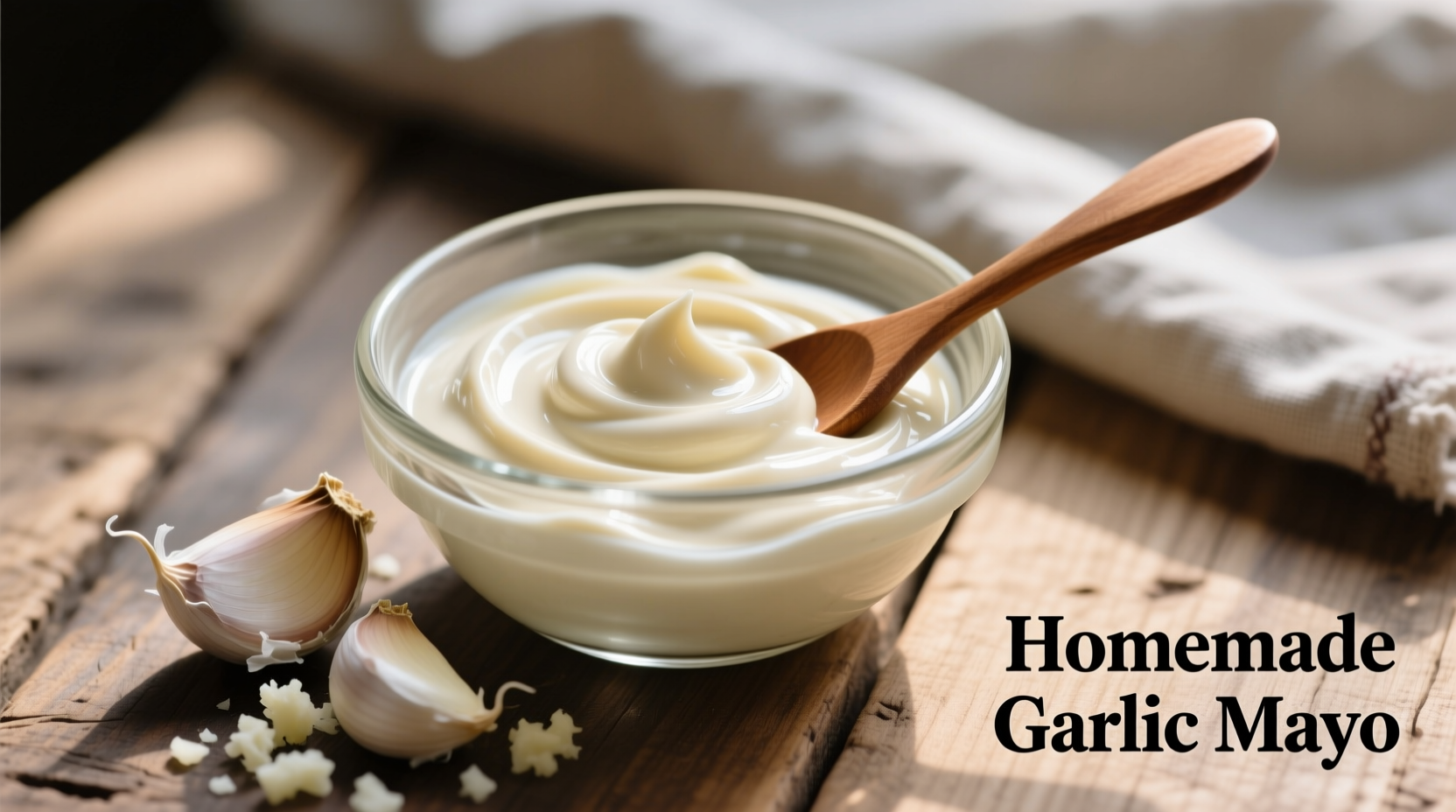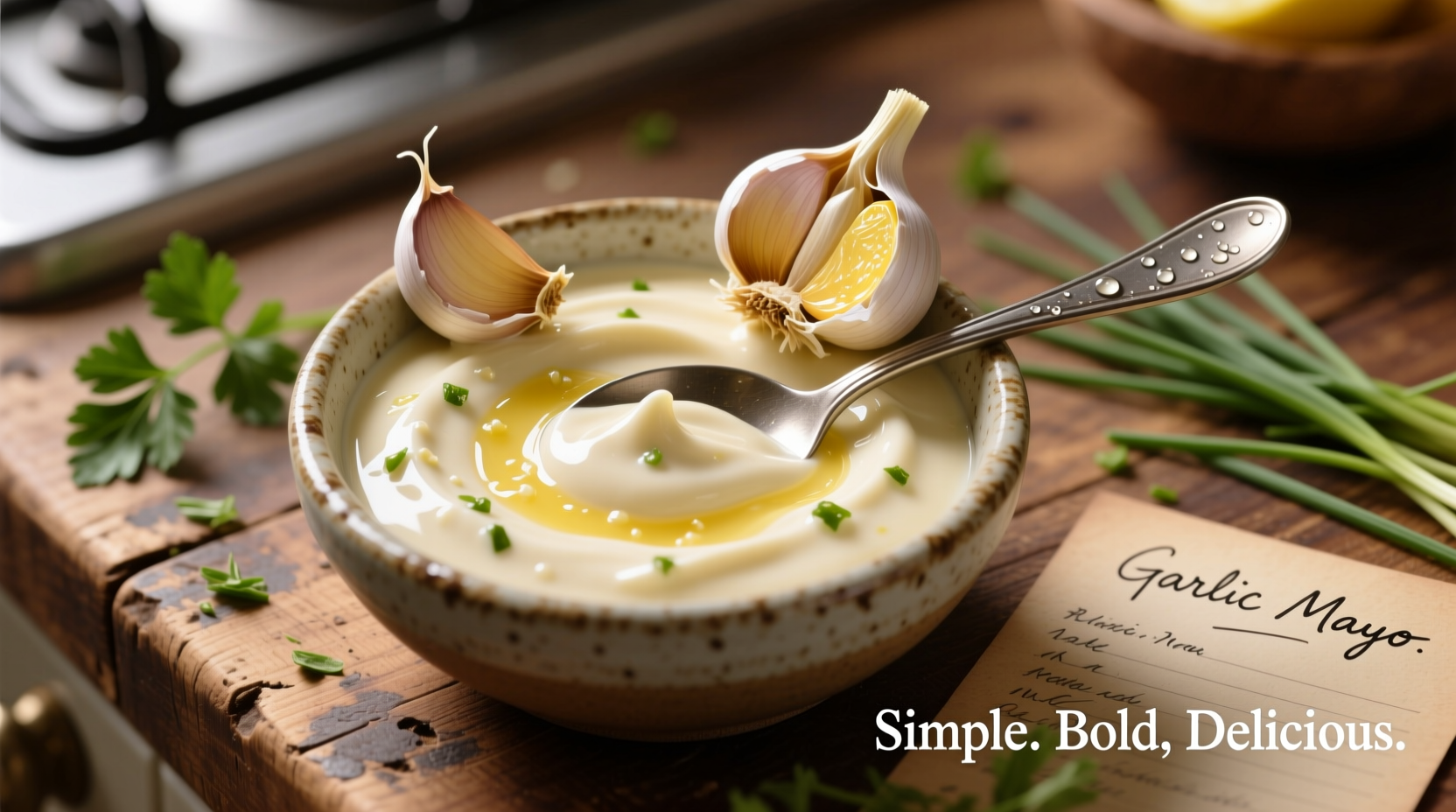Garlic mayo transforms sandwiches, burgers, and dips with its rich, aromatic flavor. Unlike store-bought versions loaded with preservatives, homemade garlic mayo offers superior taste and texture control. Let's explore the authentic method perfected through centuries of Mediterranean culinary tradition.
The Science Behind Perfect Emulsification
Creating stable garlic mayo requires understanding emulsion chemistry. When oil slowly incorporates into egg yolks, lecithin molecules act as natural emulsifiers, binding the ingredients. Rushing this process causes separation. The FDA Food Code guidelines recommend using pasteurized eggs for homemade mayonnaise to minimize food safety risks, especially for vulnerable populations.
Essential Ingredients Checklist
Quality ingredients make the difference between good and exceptional garlic mayo:
| Ingredient | Quality Recommendation | Why It Matters |
|---|---|---|
| Egg yolks | Pasteurized, room temperature | Ensures food safety and optimal emulsification |
| Garlic | Fresh cloves, finely minced | Raw garlic provides vibrant flavor (pre-minced loses potency) |
| Oil | Neutral flavor (avocado, canola) | Allows garlic flavor to shine without competing notes |
| Acid | Fresh lemon juice | Balances richness and stabilizes emulsion |
Step-by-Step Preparation Guide
Follow this professional technique for guaranteed success:
- Prepare garlic properly - Mince 2-3 fresh cloves finely, then mash into a paste with 1/4 teaspoon salt using the side of your knife. This releases allicin for maximum flavor without harshness.
- Create the base - In a medium bowl, whisk 1 large pasteurized egg yolk, the garlic paste, 1 teaspoon lemon juice, and 1/2 teaspoon Dijon mustard until smooth.
- Slow oil incorporation - Gradually drizzle 1 cup neutral oil in a thin, steady stream while whisking constantly. Start with just a few drops, then increase to a thin stream as emulsion forms.
- Adjust consistency - Once thickened, whisk in additional lemon juice (1-2 teaspoons) to reach desired consistency.
- Season and rest - Add salt to taste, then refrigerate for at least 30 minutes before serving to allow flavors to meld.

Avoiding Common Mistakes
Professional chefs consistently identify these pitfalls:
- Temperature mismatch - All ingredients must be room temperature. Cold ingredients cause separation.
- Adding oil too quickly - Maintain a slow, steady stream. If separation occurs, start a new base with another yolk and slowly incorporate the broken mixture.
- Over-garlic - Raw garlic intensifies over time. Start with less than you think you need.
- Improper storage - Keep in airtight container in coldest part of refrigerator. USDA food safety guidelines recommend consuming homemade mayo within 3-5 days.
Creative Variations and Serving Suggestions
Customize your garlic mayo for different applications:
- Lemon-Herb - Add 1 tablespoon fresh parsley and 1 teaspoon lemon zest
- Smoky Chipotle - Blend in 1-2 teaspoons chipotle in adobo sauce
- Truffle Infused - Stir in 1/2 teaspoon truffle oil after emulsification
- Roasted Garlic - Substitute raw garlic with 3-4 cloves roasted garlic for milder flavor
Use garlic mayo as a sandwich spread, dipping sauce for fries or vegetables, base for salad dressings, or as a finishing touch for grilled meats and seafood. Mediterranean culinary historians note that traditional aioli (garlic oil) dates back to Roman times, with modern versions incorporating egg yolks after the 18th century.
Storage and Food Safety Guidelines
Homemade garlic mayo requires careful handling:
- Store in airtight container immediately after preparation
- Keep refrigerated below 40°F (4°C) at all times
- Consume within 3-5 days for optimal safety and quality
- Discard if separation becomes permanent or odor changes
For extended shelf life, consider using a pasteurized egg product as recommended by food safety experts. Never leave garlic mayo at room temperature for more than 2 hours, or 1 hour in temperatures above 90°F (32°C).











 浙公网安备
33010002000092号
浙公网安备
33010002000092号 浙B2-20120091-4
浙B2-20120091-4